From tree to table: How salvaged wood becomes furniture
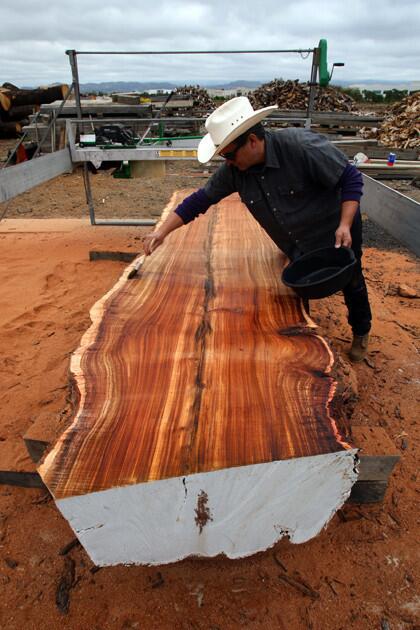
By Mary MacVean
At Woodhill Firewood in Irvine, John Dominguez stands by a cross-section of a trunk to be saved and used, instead of being chipped into mulch or sent to a landfill. Dominguez is director of a 2-month-old partnership between West Coast Arborists and Woodhill Firewood, an operation that takes in 600 tons of wood a day from tree trimming and removal jobs. (Allen J. Schaben / Los Angeles Times)
The salvaged wood look remains a huge trend in home design, but the transformation of reclaimed urban tree to dining room tabletop is a lot more complicated than most people think – and can take years. Here’s a glimpse at the process.
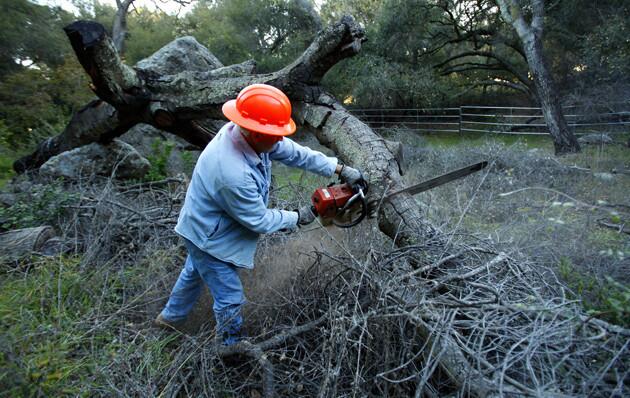
Some people identify trees on their properties that they want taken down and turned into furniture, flooring or siding, perhaps. But in other cases, trees have fallen naturally. Brent Cashion, the man behind Urban Logs to Lumber, was hired to remove three downed oaks for a Thousand Oaks client. Using a chain saw, he cuts off the branches as well as the roots in preparation for loading the trunk into his mobile mill. (Al Seib / Los Angeles Times)
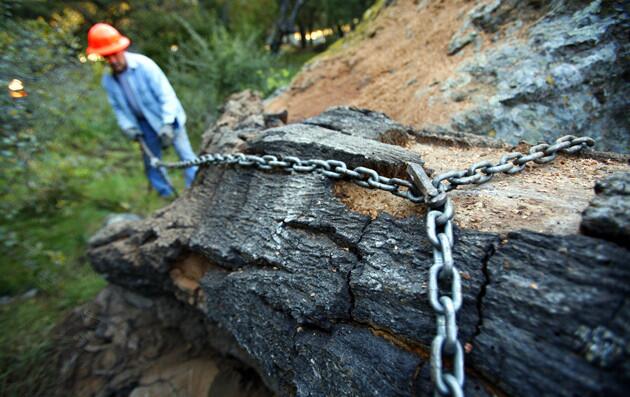
Cashion works on one trunk that he estimates at 2,500 pounds. He uses a chain and strap attached to his pickup truck to get the tree into position for milling. (Al Seib / Los Angeles Times)
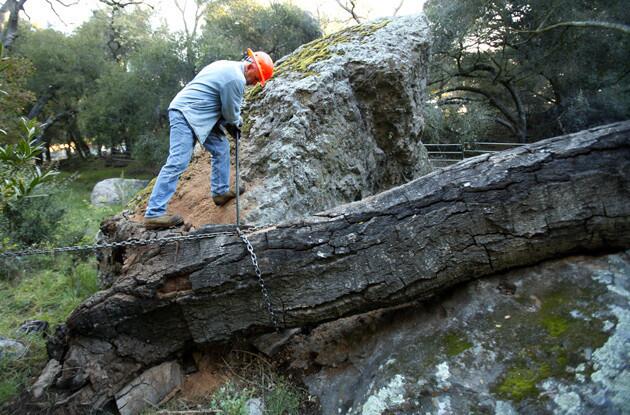
The tree, about 3 feet in diameter, had fallen against a large moss-covered rock, forcing him to saw close, but not too close, to the rock. “Did I mention there is absolutely no science to this?” he jokes. (Al Seib / Los Angeles Times)
Advertisement
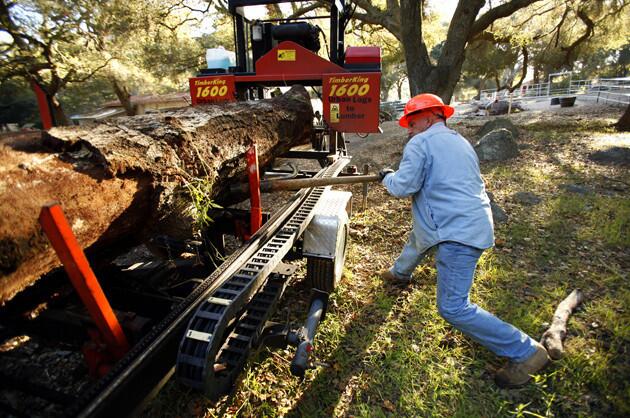
Cashion uses a cant hook and branches as levers to get the trunk into place. Arms on his portable saw lift it into place on the trailer bed. (Al Seib / Los Angeles Times)
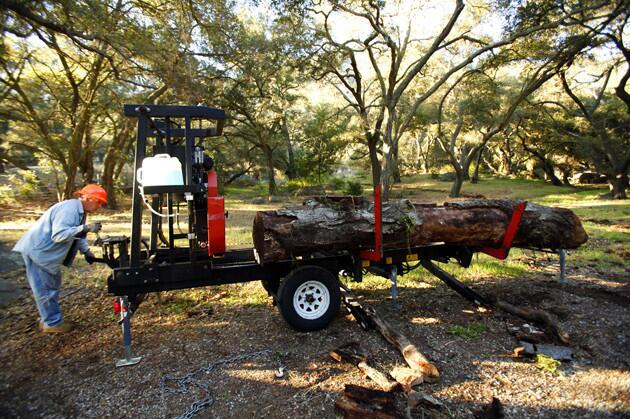
The mill has a band saw that Cashion operates with five levers, setting the size of the slab and moving the blade through the trunk. (Al Seib / Los Angeles Times)
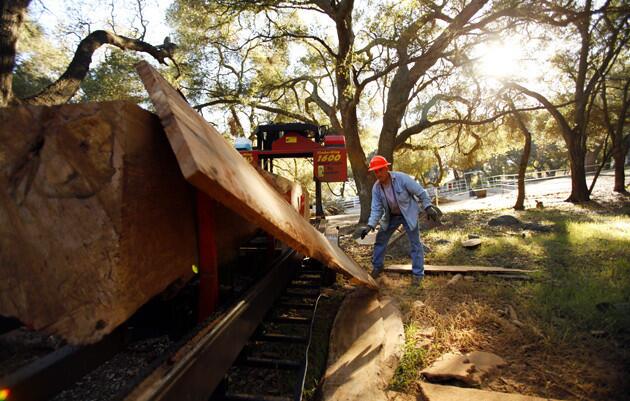
For this project, Cashion rotates the trunk so the slab will have some clean edges. (Al Seib / Los Angeles Times)
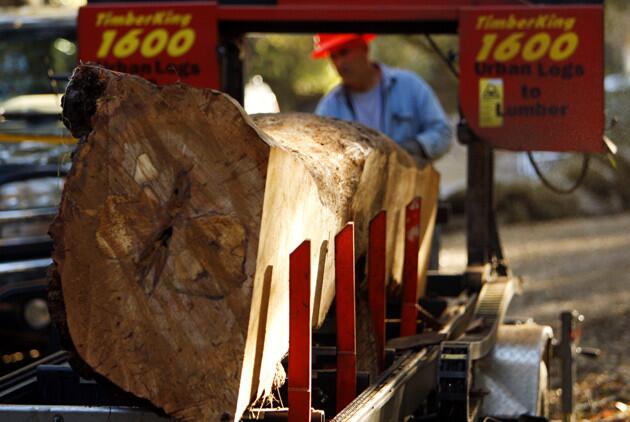
Cashion charges $100 an hour -- a bargain, he says, that translates to less than a dollar per board foot for wood that might cost eight times that from a store. (A board foot is a 1-inch-thick piece that is 1 foot long and 1 foot wide.) By the time he is done, he will have spent three hours on one tree. (Al Seib / Los Angeles Times)
Advertisement
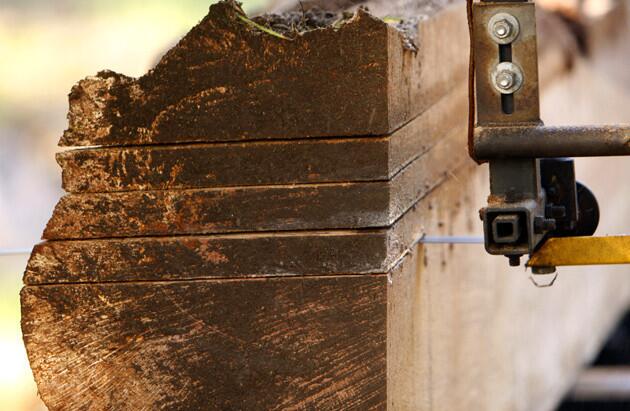
The band saw slowly makes its way through the dense wood. (Al Seib / Los Angeles Times)
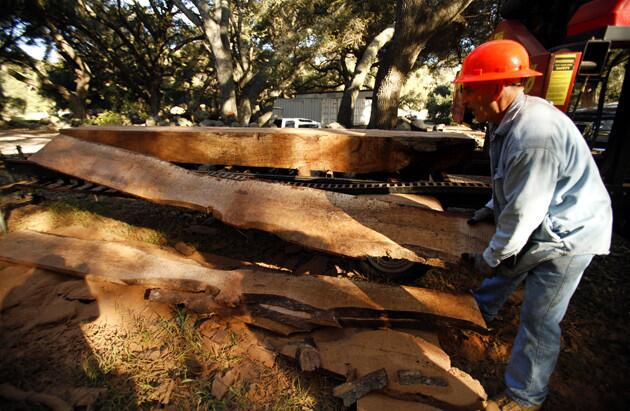
Cashion leaves these oak slabs with his client, who will dry them before they’re used for flooring. Wood is usually dried before it’s used; green wood will crack and shift, but some people use it because the finished product “is like a continual work in progress, and that’s part of the appeal,” says Marina del Rey furniture maker Cliff Spencer. Drying takes time, about a year for each inch of thickness. Spencer says most slabs used to make tables are 3 inches thick, so they would air dry for about three years. (Al Seib / Los Angeles Times)
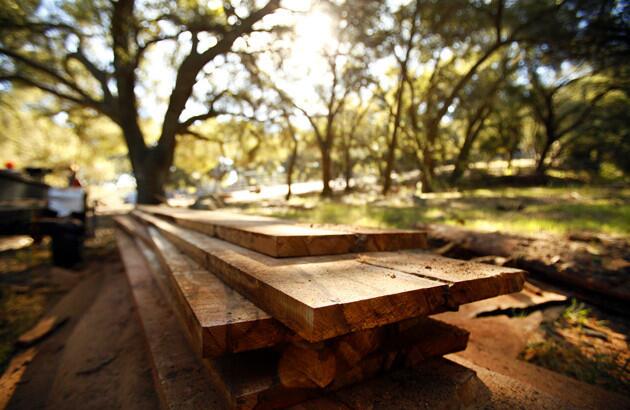
A kiln can speed up the drying process and kill bugs. Some people say it also alters the color of the wood. A 1-inch-thick slab that would need a year to air dry might cure in a dehumidifying kiln in a few months. (Al Seib / Los Angeles Times)
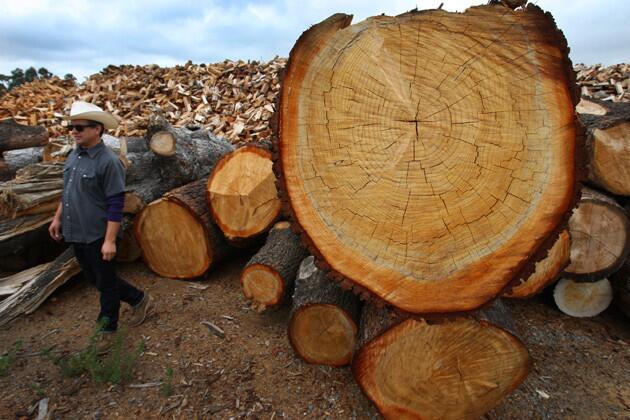
Over at Woodhill Firewood, a giant tree stump towers over John Dominguez. (Allen J. Schaben / Los Angeles Times)
Advertisement
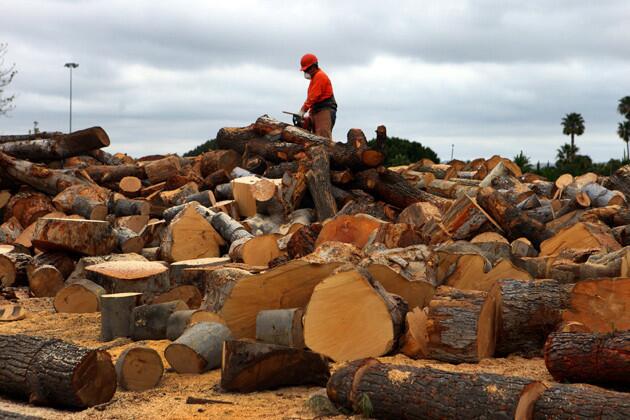
The majority of downed city trees are cut into firewood, chipped into mulch or simply sent to landfills. A recycling specialist in Burbank says about 1% of what goes to the landfill is wood. (Allen J. Schaben / Los Angeles Times)
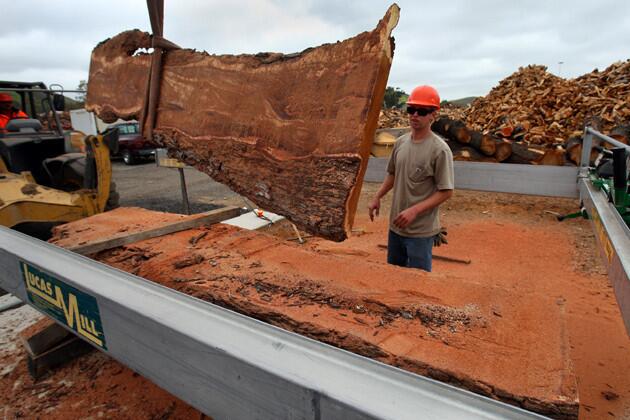
Jason Rose of Woodhill Firewood guides a slab of black acacia from a tree that fall in Monrovia Canyon State Park. If sources of these trees could be better connected with furniture makers and wood artisans, advocates say, the result would be beneficial recycling: A tree falls, gets turned into lumber and installed as flooring, for example. (Allen J. Schaben / Los Angeles Times)
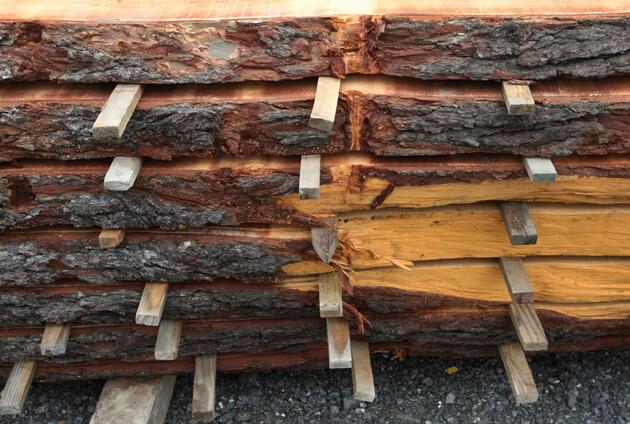
Sycamore slabs are neatly stacked for purchase. When new slabs are dried, they need to be “stickered,” which means putting something between each slab so the air can get around the wood. If that’s not done properly, the wood might be ruined in a matter of days, Cashion says. (Allen J. Schaben / Los Angeles Times)
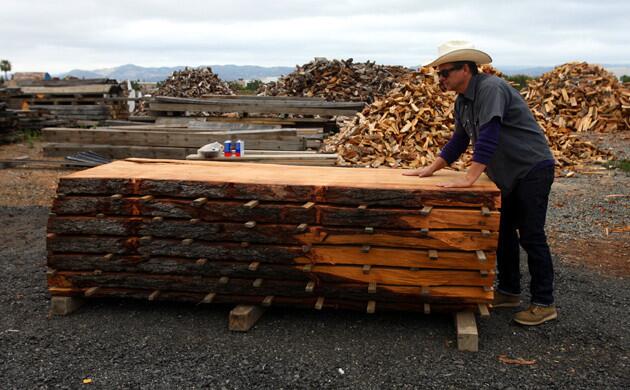
Dominguez checks a stack of sycamore slabs, each 3.5 inches thick. (Allen J. Schaben / Los Angeles Times)



